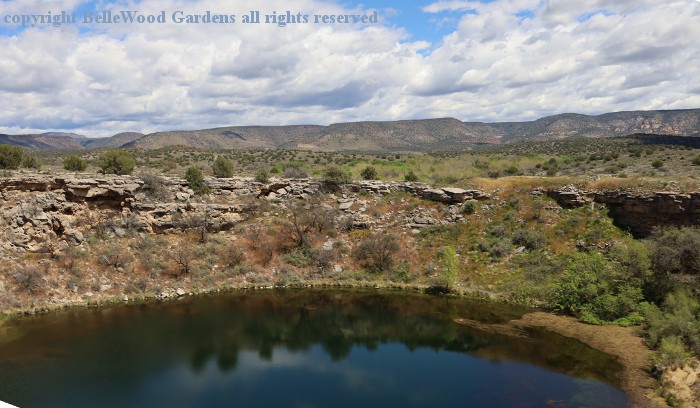
.
Wednesday, 17 & Thursday, 18 April 2019
A Trio of Arizona Pueblo Visits
Wednesday, 17 April 2019
A Visit to Montezuma Well in Arizona
On our way from Phoenix to Sedona we passed a sign for Montezuma Well. Obligatory silly jokes about Montezuma Sick. But checking it out after settling in to our AirB&B indicated that it might be an interesting place to visit. So we did.
Back then, millenia ago and right up to today, water is a serious matter. There's so little of it in Arizona. Rainfall is limited, Perennial flowing water is rare. All of this makes Montezuma Well a magical place.
Take Exit 293 from Interstate 17 and drive four miles to the parking area. There's a visitor information booth with a very friendly ranger telling people to just follow the one-third mile, paved, self-guided loop trail to the rim of the sinkhole.

Water. A massive amount of water. The Well is 368 feet across and 55 feet deep, and holds 15 million gallons of water. It contains a near-constant volume of spring-fed water even in times of severe drought. There are no fish. The limestone sink's water contains high levels of carbon dioxide. There's arsenic too.
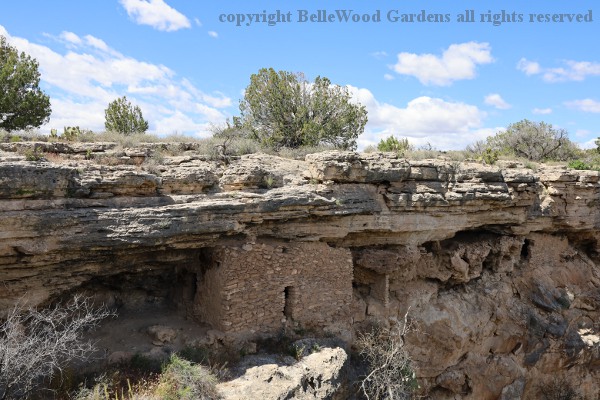
Remnants of the permanent settlements built by the Sinagua shelter in the cliffs around the Well.
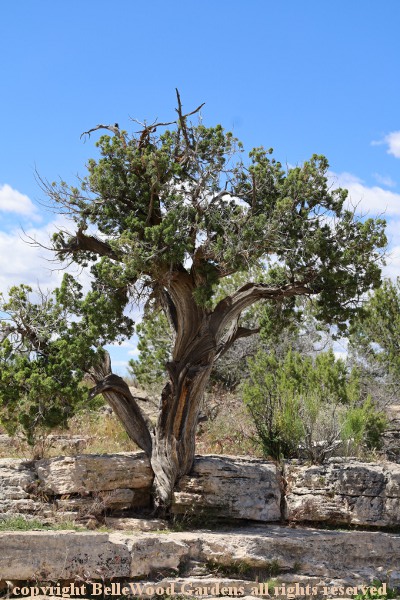
There are a few ancient junipers, their roots wedging down, down, down in the cracks and crevices, seeking moisture. Sure, there are green branches. But not many. Life here is difficult. Montezuma Well is a place of power. To be visited with respect.
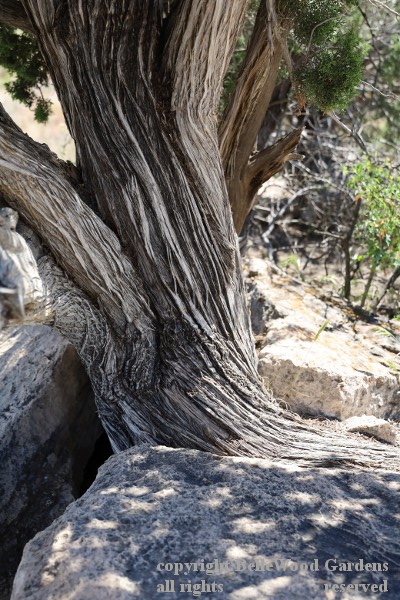
Wednesday, 17 April 2019
A Visit to Montezuma Castle in Arizona
Onward to Montezuma Castle National Monument. The visitor center is mobbed. Crowds of people are funneling through the entrance and paying their entrance fee to two harried rangers. Paul and I have our lifetime senior park passes, good for a car full of people. Flash the pass and photo i.d. at the rangers and all 6 of us get in free. This place has the best gift shop (Montezuma Well actually doesn't have one.) Which is useful as I'm still looking for basic guides for cacti and for wildflowers. The park itself is rather bland. There is a wide paved flat path that loops around.
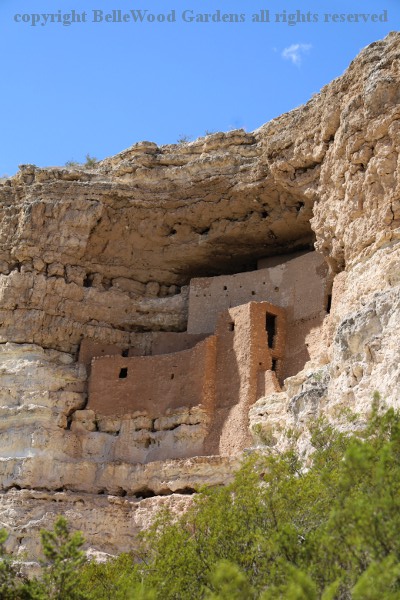
You can gaze upward at a large multi-story cliff dwelling nestled deep in the cliff.
I think that there used to be a steep path up to the dwelling. But the pressure from
large numbers of visitors meant that they were loving the aged dwelling to death.
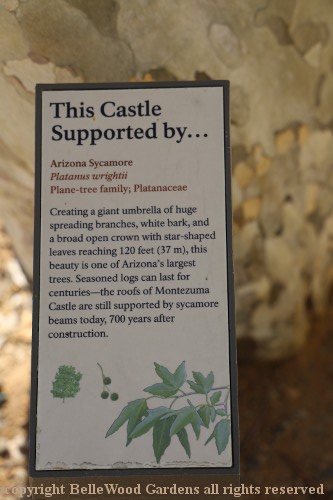
What they do have is excellent signage, explaining about the people,
the plants, and their different usages by the people who lived here.
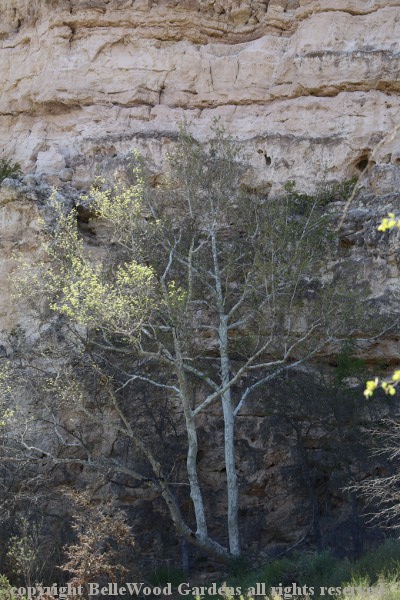
Such as the sycamore, Platanus wrightii, which continues to grow here.
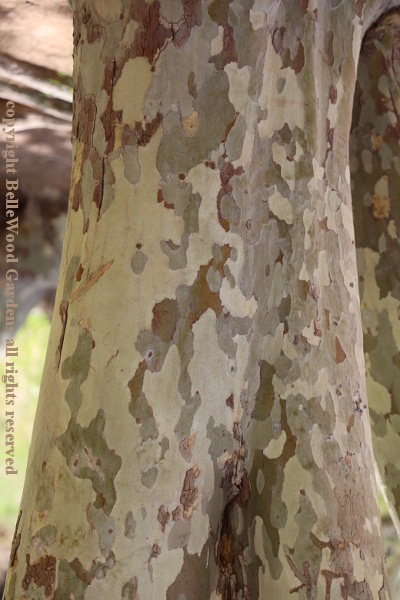
.
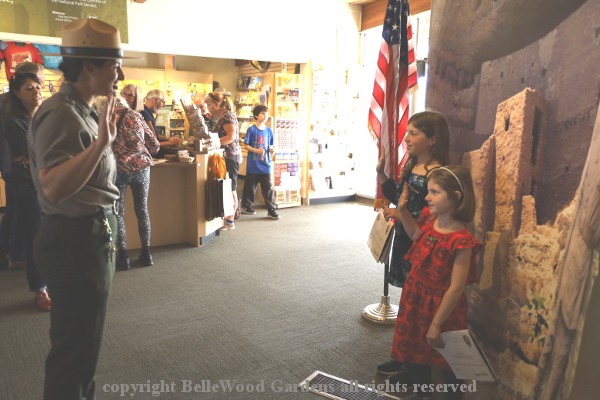
Back at the visitor center we see a ranger swearing in two girls as junior rangers.
They have completed the age-appropriate portions of a workbook which focuses
on the people, plants, and places of Montezuma's Castle. Then they swear an oath:
As a Junior Ranger, I will
Leave all plants, animals, and other objects as I found them for others to enjoy,
Put litter in a trash can or recycle bin,
Learn more about national parks all over the United States, and
Share what I have learned with my family and friends
A certificate of achievement, and a badge. They'll definitely have
something special to share when they get back to school.
Thursday, 18 April 2019
A Visit to Tuzigoot in Arizona
Our third visit, to Tuzigoot, takes us yet again to a pueblo ruin, one very different from the other two. There's a small visitor center with some artifacts which are on display at this national monument site. If you paid for Montezuma Castle, your receipt covers entrance here. A paved path leads out and around, up the slope past walls and ruins, up to the ridge crest. There's a ranger up top, cheerfully ready to answer questions about the site.
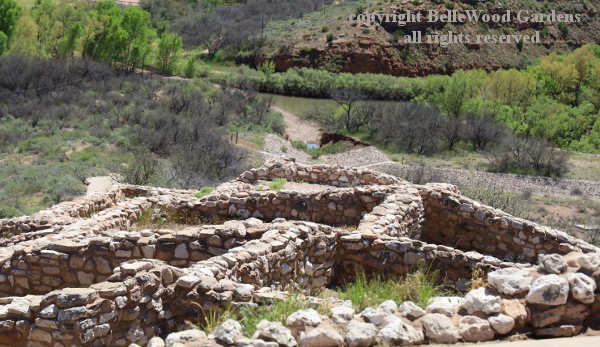
Built by the Sinagua people over a 300 year span, from about 1100 to 1400 AD, the site is an elongated complex along the crest of a limestone and sandstone ridge in the Verde Valley. At its peak in the late 1300s, the pueblo was 500 feet long, 100 feet wide, contained 86 ground floor rooms and 15 second story rooms, and probably housed as many as 230 people.
Dating for the site was done with dendroarcheology, using roof timbers for tree ring dating. Most of the roof timbers used in Tuzigoot's construction were sycamore and juniper. And apparently, neither of which lend themselves to tree ring dating.
Comment: They are different species here in New Jersey, but we do have American sycamore, Platanus occidentalis, and old field cedar, Juniperus virginiana. The sycamore, when Paul is cutting for firewood, has no apparent tree rings. Nor does the old field cedar, just red heart wood and white sap wood.
In the end, only two dates were obtained, both from pinion logs from the same roof, which dated construction of that particular section to about 1200 AD. But as the authors, Louis Caywood and Edward Spicer, lamented: "The two rooms which this single roof covered are obviously neither the earliest nor the latest constructed rooms in the pueblo. They were built at some intermediate period in the history of the village."
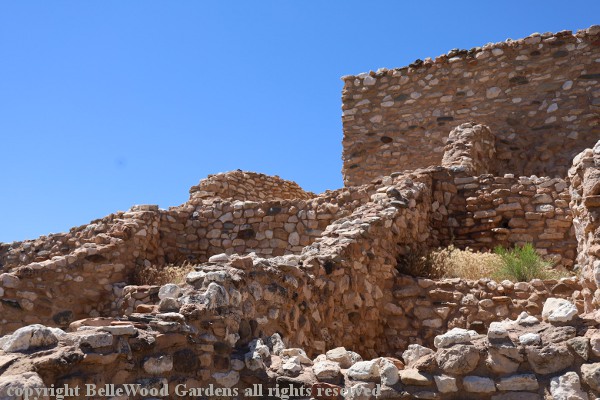
But do not be deceived that the Sinagua were using concrete to build this 110 room complex of stone masonry rooms. The site was uncovered in 1933 to 1935, then prepared for public viewing in 1935 to 1936. At which time it was reconstructed and restored with concrete.
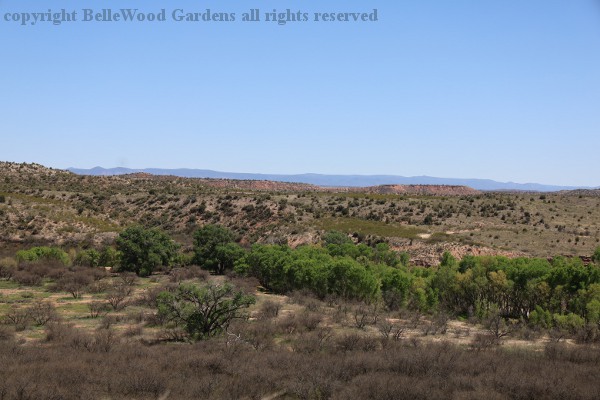
The name Tuzigoot is Apache for "Crooked Water," and the Verde River flows in a loop around the east side. Cottonwoods make a green band along the water course. The brown shrubs in the foreground are mesquite, and will soon green up. The original riverbed to the west became a large, flat marsh, and was used by Tuzigoot's people to grow traditional crops of drought-adapted squash, the very drought tolerant tepary beans, Phaseolus acutifolius, and corn.
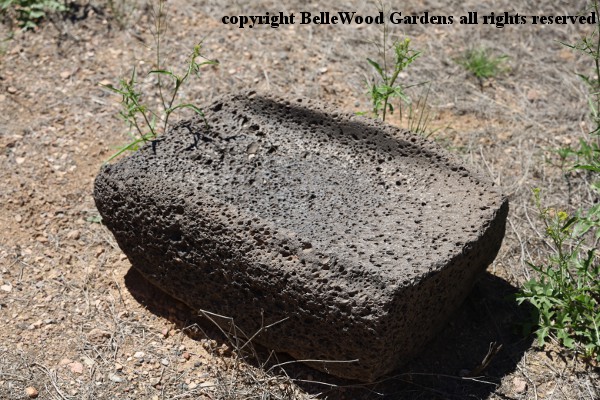
One of the rooms (waist high wall remnants delineating the space) has a volcanic stone metate. Together with a stone mano (pestle) it would have been used to grind corn into cornmeal. Or as the first step in preparing corn flour.
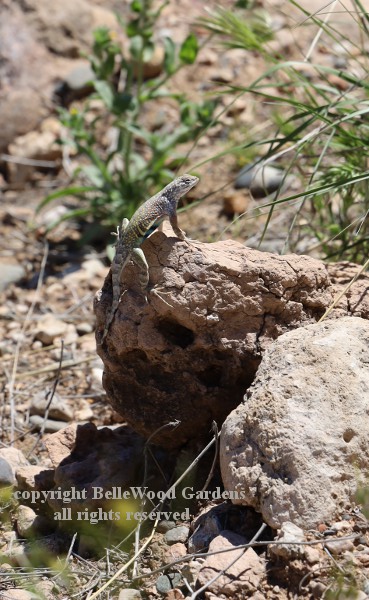
The sun is getting hot. Two small lizards dart out onto the rocks. Greater earless lizards, Cophosaurus texarius, with barred sides, striped tail and hind legs, and generally speckled hide.
The sun is getting hot. We set off to look for a shaded picnic site in Cottonwood. Another pleasant and informative outing at one of Arizona's numerous national parks and monuments.
Back to Top